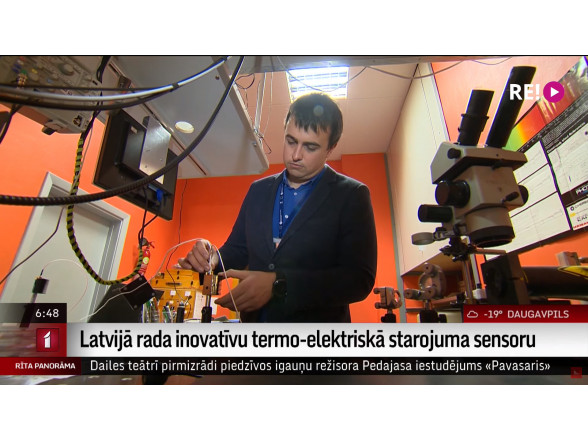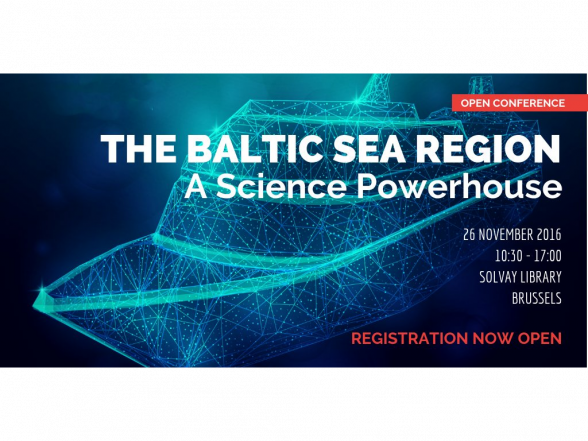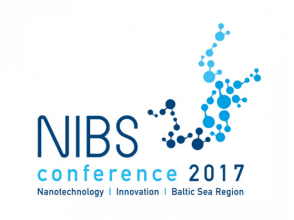On January 12, National Television (LTV1) morning news program “Rīta Panorāma” broadcasted a story about one of the most significant achievements in applied science in Latvia in 2021 “Development of Innovative, High-Speed Thermoelectric Radiation Sensor (TESS)” carried out by the ISSP UL’s researchers from the Laboratory of Organic Materials. The sensor can be used to measure the intensity of infrared radiation.
Leading researcher Mārtiņš Rutkis explains: “This is a high-speed sensor that is capable of recording very fast laser impulses that are normally used, for example, in laser surgery. There are lasers where the pulses cannot be measured separately. They are measured in an integrated long period and mean values are obtained. In principle, it works, but it is not particularly good, because the intensity of the laser varies from pulse to pulse.”
The sensor developed at the ISSP UL works a thousand times faster than those currently available on the market and allows it to work in real-time mode – measure the pulse at the same it is being emerged. Simply put, it is possible to control and provide accurate and consistent laser power - not burn what does not need to be burned. The sensor will make it possible to produce more accurate equipment for laser surgery, welding, and laser etching.
Leading researcher Kaspars Pudžs explains: “The principle of the sensor operation is based on the thermochromic effect that directly converts heat into electricity. The temperature difference generates the electrical voltage we need. Using this sensor would allow more accurate control of the lasers. If we look at etching, it will allow us to make the engraving process even more precise, because the stability of the laser, that is, its every pulse, can be controlled.”
The sensor is based on unique material properties derived from very thin films. The material came from another study that attempted to create a nanogenerator that would produce heat-generated current. The generator was not efficient enough, but what appeared to be a defect in one study became a benefit in another.
The new sensor created at the ISSP UL is patented and is also planned to be commercialized in the coming years. Mārtiņš Rutkis adds that the researchers have entered into a licensing agreement with a relatively large optical instrument component company.
ISSP UL estimates that the new sensor will be available to customers around the world by the end of 2022, while its use in laser surgery could begin in a year or two.
Video story in Latvian available here.
Article about the smart powder material in Latvian is available here.



